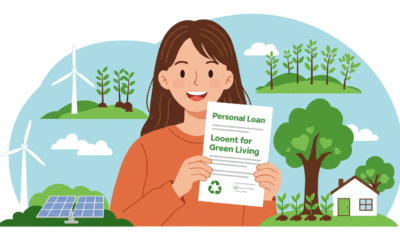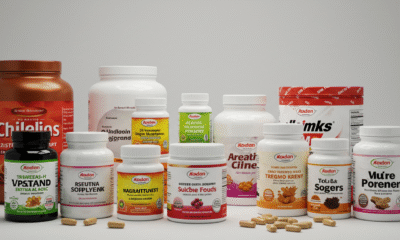

Features
What is the Eco-Friendliest Option to Wash Your Dishes?
The pandemic had a number of negative consequences, but it also what does some good things. One of the positive things about it is that it made people more concerned about sustainability. According to a survey from the World Economic Forum, 86% of people say that they wanted to live any more equitable and sustainable world after the pandemic ended.
Unfortunately, many people have a harder time living sustainable lifestyles than you might think. If you really want to live a more sustainable life, then you are going to need to think of all of the ways that your behavior affects the planet. We talked about the importance of considering solar power and finding ways to make your home more energy efficient, but there are other things to consider as well. This is going to include even seemingly mundane things like how you wash the dishes.
Keeping dishes clean is an important part of maintaining a healthy kitchen and home environment. However, you are going to have to wash them in the most eco-friendly way possible.
Eco-Friendly Ways to Wash Your Dishes
There are many different ways to clean dishes, from traditional hand-washing to modern dishwashers. One alternative method that has gained popularity in recent years is the use of Swedish dishcloths. All of these practices can be eco-friendly if you go about them the right way. In this article, we will explore different ways to clean dishes and the practical and environmental benefits of using Swedish dishcloths.
Traditional Hand-Washing Method
Hand-washing dishes is the most traditional method of cleaning dishes. To do this, you will need a sink with hot water and soap, a dish brush or sponge, and a dish towel for drying. Begin by filling the sink with hot water and adding a small amount of dish soap. Scrub the dishes with the brush or sponge, and rinse with clean water. Then, dry the dishes with a dish towel before putting them away.
Put the dishes in soapy water. Take them out one by one to wash with a sponge or dish-brush. Rinse with hot water to remove bacteria. Let them drain. This is the most sustainable method for washing dishes. It saves water and allows you to thoroughly clean each dish.
Dishwasher Method
Dishwashers are a popular choice for cleaning dishes in many households. Dishwashers use high-temperature water and detergent to clean and sanitize dishes, leaving them ready for use again. To use a dishwasher, load the dishes into the machine according to the manufacturer’s instructions and add the detergent. Then, select the appropriate cycle and turn on the machine. Once the cycle is complete, remove the dishes and put them away.
You are probably wondering whether or not a dishwasher is better for the environment than washing dishes by hand. It is a popular misconception that washing by hand is eco-friendlier, but in many cases it is better to use a dishwasher instead. We mentioned this in our previous post on lowering your kitchen’s carbon footprint. This really boils down to how many dishes you are washing at a time and and how you use your dishwasher.
A modern dishwasher can have a smaller carbon footprint than washing by hand. This is because it heats up water faster than running a tap. Using a dishwasher could reduce greenhouse gas emissions, as long as you don’t pre-rinse and only run a full dishwasher on eco-cycle once a day. If you run half-full loads multiple times a day or have an old, less energy-efficient dishwasher, washing by hand is likely a more eco-friendly option.
There are many different types of appliances that can help lower your home’s carbon footprint. A good dishwasher is among them.
Benefits of Swedish Dishcloths
Well, swedish dishcloths are an alternative to traditional sponges and paper towels for cleaning dishes. These cloths are made from a combination of wood pulp and cotton, which makes them absorbent and durable. They are also eco-friendly and can be washed and reused many times.
Swedish dishcloths come in many different designs and patterns, making them a stylish and functional addition to any kitchen. They can be used for a variety of cleaning tasks, such as wiping counters, cleaning spills, and washing dishes.
In addition to being eco-friendlier than many other wash cloths, using Swedish dishcloths for washing dishes has several benefits. First, they are more hygienic than traditional sponges. Sponges can harbor bacteria and other germs, which can lead to cross-contamination. Swedish dishcloths can be easily washed in hot water to kill germs and keep them clean and fresh.
Second, Swedish dishcloths are more sustainable than paper towels. According to a study by the Environmental Protection Agency, the United States produces over 6 million tons of paper towels each year, most of which end up in landfills. Using Swedish dishcloths instead of paper towels can help reduce this waste and save money in the long run.
Finally, Swedish dishcloths are versatile and easy to use. They can be used for washing dishes, cleaning counters, and wiping spills. They are also easy to wring out and dry quickly, which means they won’t harbor bacteria or produce unpleasant odors.
Other Dish Cleaning Methods
In addition to traditional hand-washing and dishwashers, there are other methods for cleaning dishes. For example, some people prefer to use natural cleaning products such as vinegar, baking soda, and lemon juice to clean their dishes. These ingredients tend to be a lot better for the planet than regular detergent, especially since they don’t harm animals, flora and fauna as much. Others may use specialized cleaning tools such as scrub brushes, steel wool, or dish wands.
You can try using dish washing tools made from entirely natural ingredients if you want to be really eco-friendly. For example, many eco-friendly consumers use bamboo dish brushes to minimize the consumption of nonrenewable materials.
There Are Different Ways to Wash Dishes Without Harming the Planet
If you are concerned about protecting the environment while washing dishes, then you’re going to have to consider different approaches. In conclusion, there are many different eco-friendly ways to clean dishes, each with its own advantages and disadvantages. Traditional hand-washing is a tried and true method that is affordable and effective. Dishwashers are a convenient option for those with busy lifestyles, while natural cleaning products and specialized tools offer alternative options. For those looking for a sustainable and hygienic alternative, Swedish dishcloths are a great option. These cloths are durable, eco-friendly, and easy to use, making them a stylish and functional addition to any kitchen.


 Environment10 months ago
Environment10 months agoAre Polymer Banknotes: an Eco-Friendly Trend or a Groundswell?

 Environment11 months ago
Environment11 months agoEco-Friendly Home Improvements: Top 7 Upgrades for 2025

 Features8 months ago
Features8 months agoEco-Friendly Cryptocurrencies: Sustainable Investment Choices

 Features10 months ago
Features10 months agoEco-Friendly Crypto Traders Must Find the Right Exchange




























